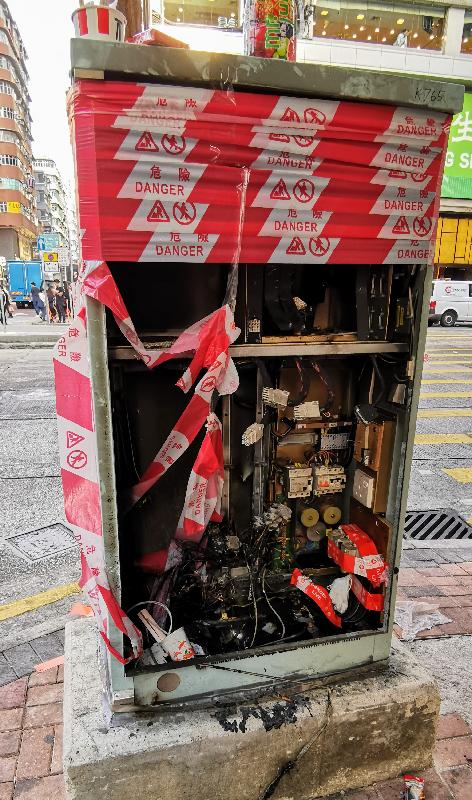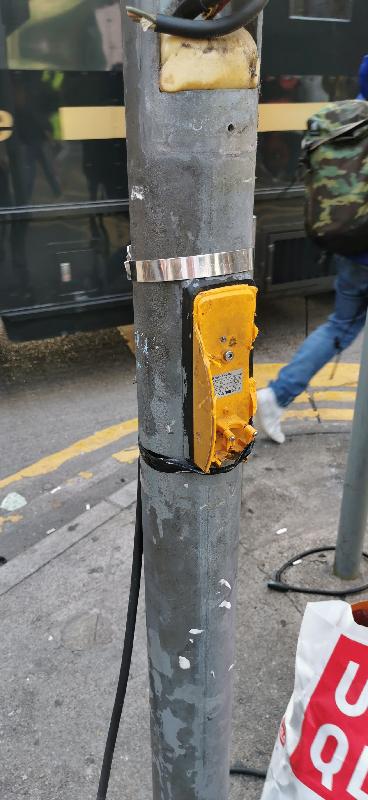In response to an article that appeared in The Lancet on November 21, a Government spokesman said the following today (November 28):
The Hong Kong Special Administrative Region Government rejects claims by Dr Darren Mann in his online article (The Lancet, November 21) entitled "International humanitarian norms are violated in Hong Kong".
By the time Dr Mann arrived at the Hong Kong Polytechnic University on November 17, violent protests and riots had been taking place, and escalating, for five days at the campus, in surrounding areas and elsewhere in Hong Kong. The Government's approach, including that of the Police and other emergency services, was to resolve the standoff at the university peacefully and flexibly.
Context is needed in this case. Rioters and radical protesters had seized control of the campus and areas near it, including a major footbridge above the busiest arterial road tunnel in Hong Kong. They set fire to the footbridge and the toll booths. They bombarded police officers with petrol bombs, rocks and metal objects fired from high-tension catapults capable of killing. They fired arrows, one of which pierced a police officer's calf. Extensive damage was done to the campus and dangerous chemicals were stolen from laboratories. Hundreds, if not thousands, of petrol bombs were being stored and manufactured on campus. In addition, the threat posed to the general public by the smuggling out of petrol bombs and dangerous chemicals capable of making bombs needed to be contained. The situation was extremely dangerous and volatile and a serious threat to public safety and human life.
Throughout the incident, rioters and others inside – including members of the media and first-aid providers – were repeatedly asked and given opportunities to leave the campus peacefully. Many took up this offer, but many did not. Those under the age of 18 were allowed to leave without being arrested at the scene after providing personal details. The Police reserve the right to take follow-up legal action if necessary. A mass exodus occurred on the evening of November 17, during which all those leaving were detained. It has been a common tactic of rioters to disguise themselves as first-aid workers or media representatives to escape detection and arrest. Owing to the large numbers leaving the campus and the ongoing chaotic situation, the Police did detain people claiming to be first-aid workers and media representatives to confirm their identities and credentials. Those who could prove their bona fides were released. Those who could not were arrested. Those arrested included 12 people self-claimed to be first-aid workers who did not have first-aid qualifications and did not work for any medical institution, and seven who claimed to be media workers but could not produce any solid proof.
Dr Mann's own account acknowledges that the Police did suggest that ambulance crews could attend the scene, but this offer was rejected by protesters for fear of being arrested. On the morning of November 18, the Police started to make arrangements for Hong Kong Red Cross (HKRC) volunteers to enter the campus. The HKRC volunteers arrived at 2pm to provide first aid to the injured. Contrary to Dr Mann's claim, they were not delayed in their work, nor given a time limit. This was confirmed by the HKRC on November 22 through its official statement, which reads as follows: "Hong Kong Red Cross would like to clarify that, through the co-ordination and communications with different parties, including Hong Kong Police Force, our first aid team provided first aid service to anyone in need in the campus, without any delay, obstruction or impolite treatment. The arrangement and duration of the HKRC's services are decided after due consideration on service needs, capability of the HKRC and safety factors" (www.redcross.org.hk/en/press_room/press_release_2019/20191122.html).
The Police arranged for other groups including the Fire Services Department (ambulances) and Médecins Sans Frontières volunteers to provide medical or first aid services at or in the vicinity of the campus.
In parallel, the Hospital Authority (HA) closely monitored the situation to ensure that Accident and Emergency Departments (AEDs) in public hospitals were ready to promptly provide medical services if and when needed. Around 80 injured persons from the campus were received by various AEDs on the morning of November 19.
At around noon that day, around 100 injured persons were still at the scene. The HA sent an Emergency Medical Team to the site to assess the situation and eventually arranged for the transfer of about 200 injured persons to 12 public hospitals for treatment. Most were in a stable condition.
Throughout the entire incident, the Government leadership and emergency services departments, in co-operation with a wide range of others including university staff, secondary school principals, community and religious leaders as well as social workers, have appealed to the protesters and the injured to leave the campus peacefully and to seek medical care as necessary.
The well-being and safety of the injured, who include police officers, has been a top priority of the Government from the time the standoff started.




